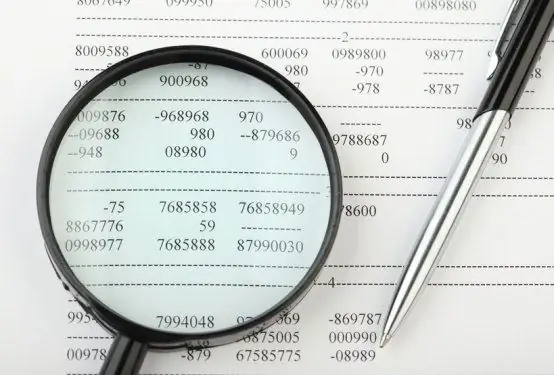- Author Isaiah Gimson [email protected].
- Public 2023-12-17 02:53.
- Last modified 2025-01-24 12:06.
The balance sheet is one of the main forms of accounting. It includes information about all assets and liabilities of the company, shows the financial condition of the organization and gives an assessment of all operations. This report is filled in on unified form No. 1, which has two tabular sections: asset and liability. The balance is filled at the beginning and end of the reporting period.

Instructions
Step 1
You can fill in the balance both electronically and manually. First, determine the tax period for which you need to provide information. As a rule, financial statements are handed over 4 times a year - for three months, six months, nine and a year.
Step 2
Fill out the small table on the right. Date the report. Indicate OKPO (you can see it in the letter from the statistics authorities), TIN (this information is indicated in the certificate of registration), OKVED (look in the extract from the Unified State Register of Legal Entities).
Step 3
Indicate the date on which the balance is calculated. If you rent for a quarter, then indicate the last day of the month. In the line below write the name of the organization, it is possible not completely, for example, LLC "Vostok". Then indicate the TIN, type of activity (code) and organizational and legal form, for example, "LLC".
Step 4
Underline the unit of measure in which the balance sheet amounts are provided. Below write the actual address of the location of the organization.
Step 5
Proceed to completing the first section. On line 110, indicate the amount of all intangible assets available in the organization (you can see it on the debit of account 04). Intangible assets include that property that does not have a tangible form (computer programs, for example).
Step 6
Indicate the amount of fixed assets (you can see it on account 01). Fixed assets are those items that have a useful life of more than 12 months (building, equipment, for example).
Step 7
Next, indicate the amount of construction in progress. To do this, add the amount on the debit of accounts 07 and 08, and subtract from it the amount of accrued depreciation for objects that have not passed state registration. Also, the turnover on account 08.8 is deducted from the amount.
Step 8
In the line below, indicate profitable investments in material assets (you can get this information by opening the account 03 card). To fill in line 140, open the card of accounts 58 and 59. Subtract 59 from the debit turnover of account 58.
Step 9
On line 145, indicate the amount of deferred tax assets (look at it on the debit of account 09). Next, write the sum of all non-current assets that were not included in the previous lines, for example, R&D, expenses for the development of natural resources.
Step 10
Fill in section 2. Here you must indicate the amount of stocks, and you need to break them down by categories: raw materials (balances on debit of account 10), work in progress (balances on debit 20 and 44), finished goods and goods for resale (balance on debit of account 41 and 43).
Step 11
Indicate the amount of VAT on the purchased values, for this, generate a card for account 19. On line 230, indicate the amount of long-term receivables, and on line 240 - short-term.
Step 12
Fill in line 250 if you invested funds for a short-term period, for example, opened a deposit in the bank. Next, indicate the amount of funds available to the organization. To do this, add up the debit balance of account 50 and 51. Summarize below.
Step 13
Proceed to filling out the tabular section, which indicates the liabilities of the organization. On line 410, indicate the amount of the authorized capital (see it on the credit of account 80). On the line below, write the amount of equity (account 81 credit), additional capital (account 83), reserve capital (account 82). On line 470, indicate the amount of retained profit or loss (account 84). Summarize.
Step 14
Complete Section 4, Long-Term Liabilities. To do this, you will need account cards 67, 77. Summarize below.
Step 15
Next, fill in the "Short-term liabilities" section. To do this, create account cards 66, 60, 70, 68, 69, 62. In order to indicate the amount of deferred income and reserves for future expenses, open account 98 and 96. On line 660, indicate other short-term liabilities. Summarize. Complete the next section based on the off-balance sheet credit balance.






